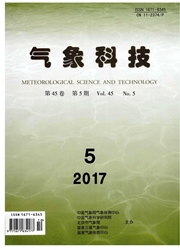

 中文摘要:
中文摘要:
利用1975—2008年云南6个气候代表站的最高气温、最低气温和平均气温资料,分析了气温序列的变化趋势,探讨了可能的形成原因。结果显示,各代表站的气温总体上呈上升趋势,但气温变化率的大小与其所处的气候带之间没有明显的规律性差异。代表高原气候的香格里拉站其气温增暖趋势最突出,代表北亚热带、中亚热带和南亚热带站点的气温与其有相似的变化趋势,主要表现为最低气温增温速率最大,平均气温次之,最高气温最小,而气温日较差(DTR:Difference of Temperature Range)有明显减小趋势。温带和北热带代表站气温的变化则有不同的特征,温带的变化表现为最高气温显著上升,最低气温上升速率略小于平均气温的上升速率,DTR变化不显著;北热带的变化表现为平均气温增温速率最大,最低气温次之,最高气温最小,DTR变化不显著。对各站相对暖日、冷日、暖夜、冷夜和霜日的逐年统计分析表明,总体上云南的冷事件在减少,而暖事件增多。
 英文摘要:
英文摘要:
Using the daily maximum, minimum, and mean temperature data sets from 1975 to 2008 of six representative climate stations in Yunnan Province, the trends of extreme temperature are analyzed and the possible causes are discussed. The results show that the temperature trends of all representative climate stations were generally rising, while there was no systematic difference among them. Especially, the warming trends of Shangrila (representing the Plateau Climate) were distinct. The main features include: the warming rate of minimum temperature was the biggest; that of mean temperature was the next, and that of maximum temperature was the smallest. Meanwhile DTR (Diurnal Temperature Range) showed significant decreasing trend, which resembled the features of the Northern, Middle and Southern Subtropical Zones. However, the temperature in the temperate zone and the Northern tropical zone displayed different characteristics. As for the temperate zone, the maximum temperature increased significantly, and the growth rate of minimum temperature was slightly less than that of mean temperature, while DTR had no significant variation. With regard to the Northern tropical zone, the growth rate of mean temperature was the greatest, then the minimum temperature, and the maximum temperature the least, and there was no significant change in DTR. In addition, the statistical analysis of warm days, cold days, warm nights, cold nights, and frost days show that cold events were decreasing and warm events were increasing.
 同期刊论文项目
同期刊论文项目
 同项目期刊论文
同项目期刊论文
 Assessing the Seasonal Predictability of Summer Precipitation over the Huaihe River Basin with Multi
Assessing the Seasonal Predictability of Summer Precipitation over the Huaihe River Basin with Multi Evaluation of summer temperature and precipitation predictions from NCEP CFSv2 retrospective forecas
Evaluation of summer temperature and precipitation predictions from NCEP CFSv2 retrospective forecas The Influence of Sulfur Dioxide on Dobson Spectrophotometer Total Ozone Measurement: Analysis on the
The Influence of Sulfur Dioxide on Dobson Spectrophotometer Total Ozone Measurement: Analysis on the Changes in Stratospheric ClO and HC Concentrations under Different Greenhouse Gas Emission Scenarios
Changes in Stratospheric ClO and HC Concentrations under Different Greenhouse Gas Emission Scenarios Application of a Coupled Land Surface-Hydrological Model to Flood Simulation in the Huaihe River Bas
Application of a Coupled Land Surface-Hydrological Model to Flood Simulation in the Huaihe River Bas 期刊信息
期刊信息
